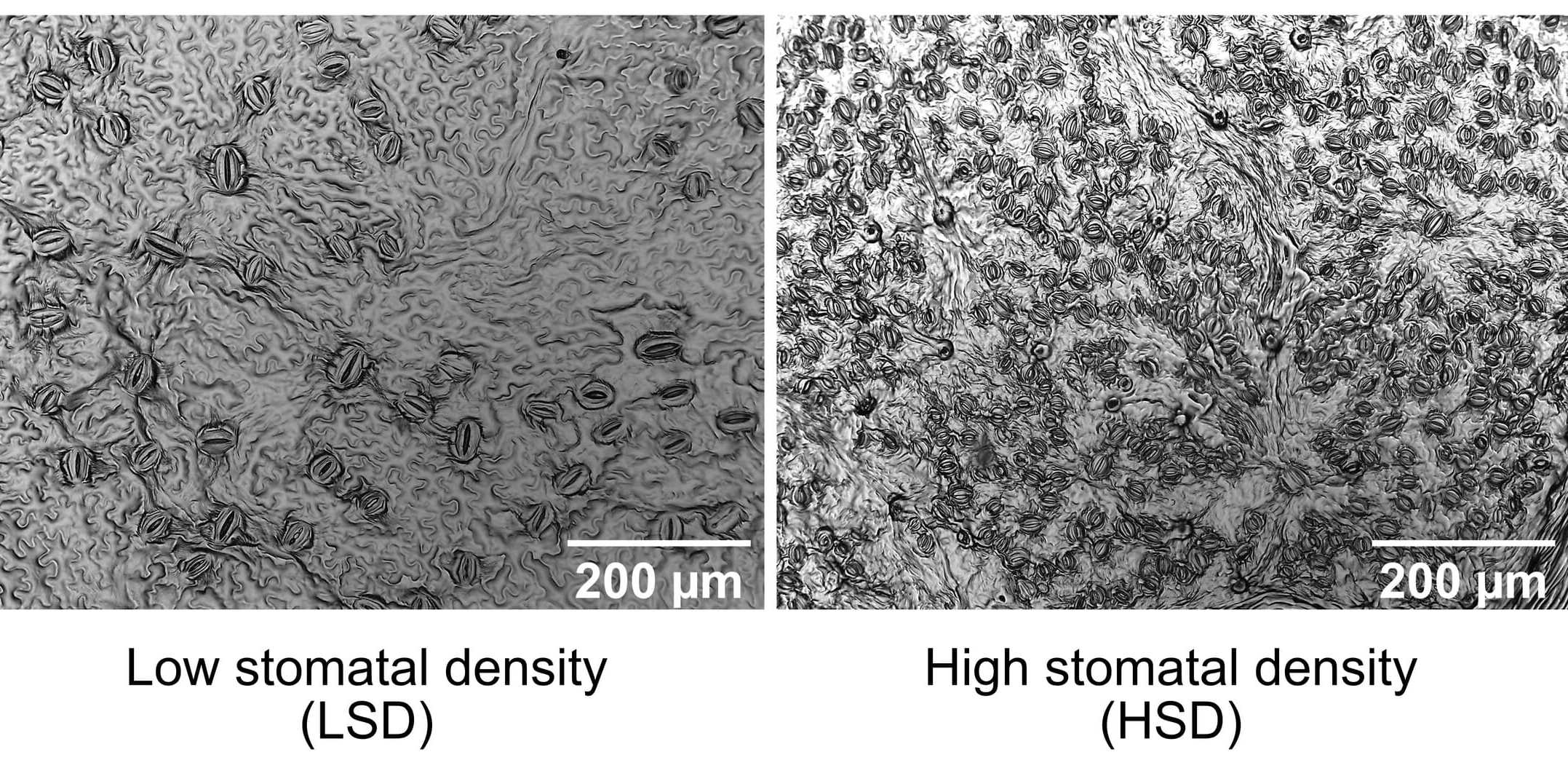Stomatal density trade-offs and implications for apple breeding
Stomatal density is important for productivity under environmental stress, but its increase reduces water-use efficiency, highlighting an important trade-off for future apple breeding.

Climate change will likely increase water scarcity and high temperatures in temperate regions, intensifying agricultural demand for freshwater. Apple (Malus domestica Borkh.) is an important fruit crop worldwide and, like other perennials, is sensitive to water deficits. Stomata play a key role in plant-water relations, making them important targets for improving water-use efficiency (WUE) and climate resilience.
Here, we investigated stomatal density (SD) in 269 apple accessions over three years (2019 to 2021), revealing consistent yet significant differences between accessions. Two subsets of accessions, 20 with high SD (HSD, 370 to 500 stomata per mm2) and 20 with low SD (LSD, 192 to 316 stomata per mm2), were compared for stomatal function, leaf physiology and productivity across 2021 and 2022. The LSD subset exhibited lower stomatal conductance (gs) but higher intrinsic WUE in both years (p < 0.05). In 2022, hotter and drier conditions reduced gs similarly in both groups (~22%) but caused a difference in net carbon assimilation (Anet), favouring HSD (+1.7 µmol CO2 m-2 s-1, p < 0.05). In the wetter 2021, LSD had slightly more open stomata per unit compared to HSD, but in 2022, stress conditions minimized this difference. Despite having fewer open stomata, HSD maintained higher carbon assimilation, indicating SD is more crucial than individual stomatal opening. The lower gs/gsmax and stomatal numbers in LSD restricted CO2 diffusion and limited Anet. This constraint was reflected in δ13C (p < 0.001) and a significant yield decline (−35%, p < 0.001).
Our findings highlight the importance of SD for improving WUE but reveal a trade-off between water saving and productivity. This balance, and the question if resource efficiency or maximum productivity is preferred, must be carefully considered in breeding strategies for climate resilience.
This work was funded by the ETH Zurich project grant ETH-32 21-1, and it was done in collaboration with the fruit breeding and breeding research group at Agroscope in Wädenswil. The outcome of this project was subject to the ISHS Minds Award for the best poster presentation of Francesca Zuffa at the XVI EUCARPIA Symposium on Fruit Breeding and Genetics in Dresden-Pillnitz (Germany) from September 11-16, 2023.
Citation:
Zuffa F, Jung M, Yates S, Quesada-Traver C, Patocchi A, Studer B and Dow G (2024) Interannual Variation of Stomatal Traits Impacts the Environmental Responses of Apple Trees. Plant, Cell & Environment. external page https://doi.org/10.1111/pce.15302